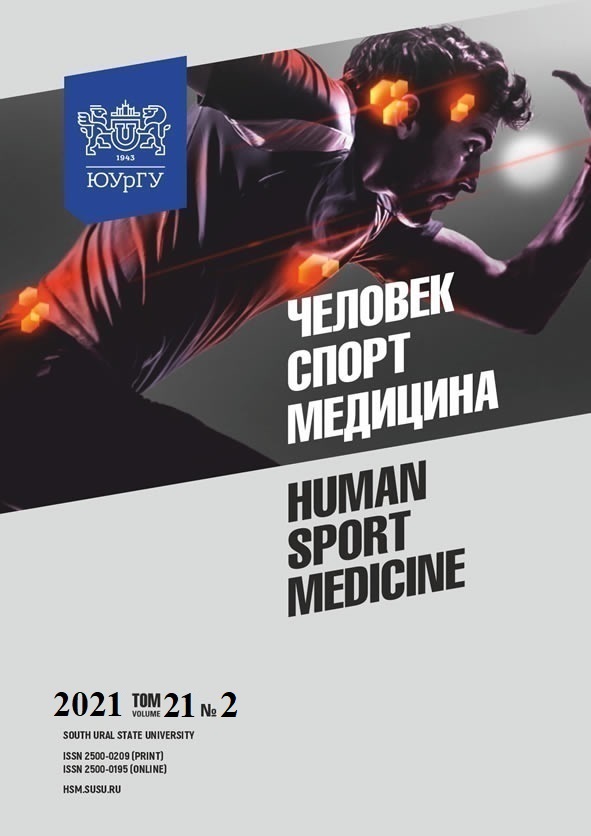FEATURES OF THE FUNCTIONAL STATE OF THE CARDIOVASCULAR SYSTEM AND ITS ADAPTATION TO PHYSICAL STRESS IN CHILDREN WITH VISUAL IMPAIRMENT
Abstract
Aim. The aim of the paper was to study the features of hemodynamics in visually impaired children at rest, after limited physical activity, and in different modes of physical activity. Materials and methods. The study involved visually impaired girls aged 7-8 and engaged in physical activity according to the program of a special school (n = 32) and visually impaired girls involved in adaptive swimming (n = 14). Children of the same age without visual impairment (n = 30) were examined as a control group. The functional state of the cardiovascular system was assessed according to the indicators of the pumping function of the heart, total peripheral vascular resistance and blood pressure using the REACARD automated device and the Omron M2 Basic tonometer. The Martinet – Kushelevsky test (20 squats per 30 seconds) was used as limited physical activity. Results. It was found that compared with the control group, girls with visual impairment at rest demonstrated lower blood pressure and stroke volume accompanied by an increase in heart rate. Limited physical activity in visually impaired girls resulted in a greater decrease in blood pressure in the absence of changes in stroke volume and a sharp increase in heart rate. At the same time, children involved in swimming were characterized by a more favorable response to physical activity accompanied by an increase in stroke volume against a moderate increase in heart rate and blood pressure and a decrease in total peripheral vascular resistance. Conclusion. Visually impaired girls are characterized by a lower level of hemodynamic performance at rest and the lack of formation of urgent adaptation to dynamic physical activity compared with the control group. Special classes that include adaptive swimming have a positive effect on the cardiovascular system and increase its adaptive capabilities.
References
References on translit
Copyright (c) 2021 Human. Sport. Medicine

This work is licensed under a Creative Commons Attribution-NonCommercial-NoDerivatives 4.0 International License.















